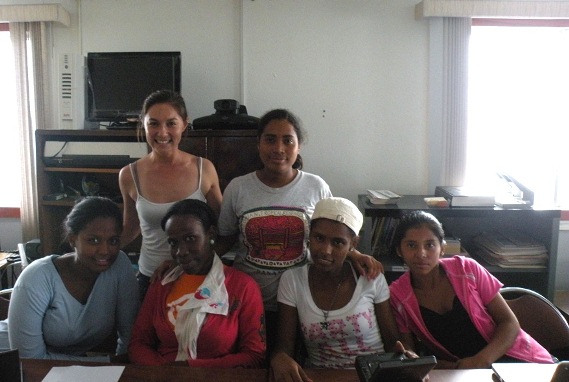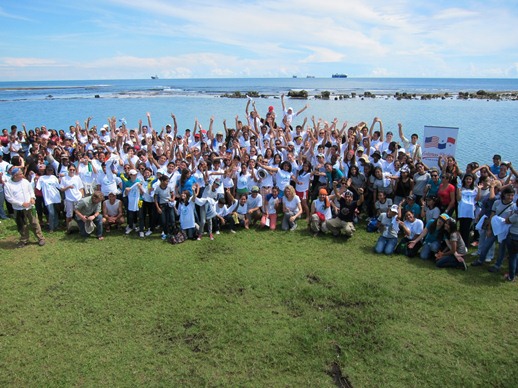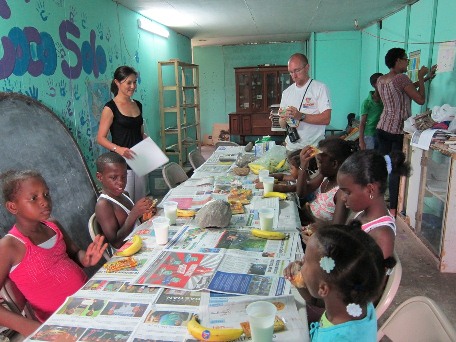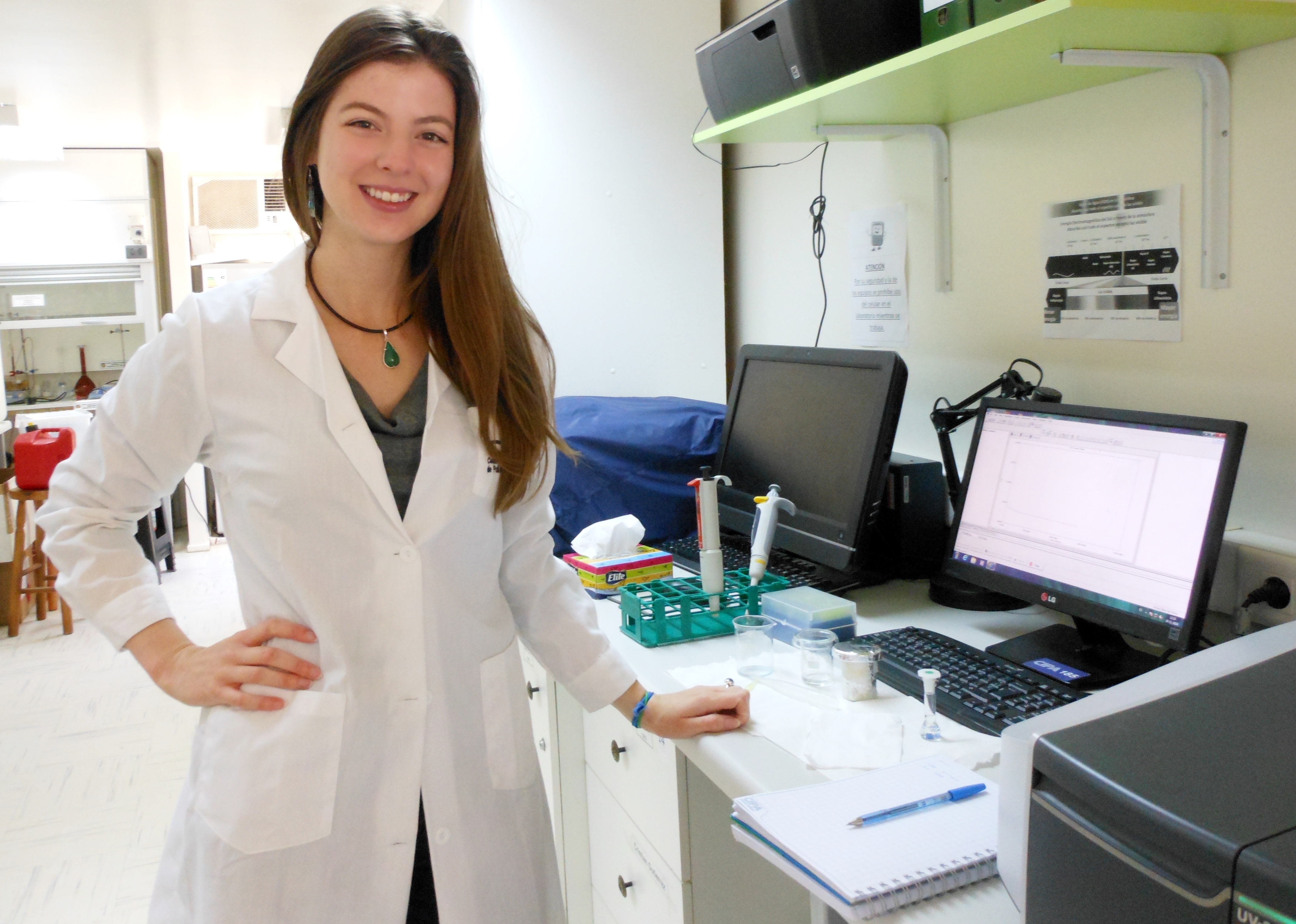It’s no secret that the world’s coral reefs are declining at alarming rates. I witnessed this fact firsthand during my journey as a Fulbright U.S. Student in Panama. I conducted my research at Galeta Marine Laboratory, which is situated on Panama’s Atlantic Coast ten miles away from the Panama Canal. Disturbances to coral reefs, such as overfishing, waste disposal and oil release from ship traffic, have negatively affected many coastal communities whose livelihoods depend on healthy, productive oceans. To understand how these changes will impact the coral reef ecosystem, researchers must study interactions between coral reef organisms so that when a group of organisms is in decline, researchers will know how other organisms and overall reef health will be affected.
I studied feeding interactions between a ubiquitous coral reef predator, the stomatopod crustacean (or mantis shrimp), and its prey. With the help of five local undergraduate students at the Regional Branch of the University of Panama in Colón, we determined that stomatopods eat many small animals including hard-shelled prey, fish and worms. Stomatopods are also eaten by common coral reef fish. Thus, these little known creatures are actually very important links between the large and small animals that make up the Caribbean coral reef ecosystem.
Unfortunately, debris that destroys coral reefs also washes onto Galeta’s beaches. After three months of spending everyday in the water, I could no longer bear the sight of plastic, old shoes and tires on Galeta’s otherwise beautiful shores. In response, I created a beach cleanup program that organizes a cleanup every two months with local students and scientists. A highlight for me was when 350 local students, along with the U.S. Ambassador to Panama, volunteered at a beach cleanup that I organized with the U.S. Embassy. This program inspired me and Galeta Marine Laboratory staff to start recycling programs in Colón schools near Galeta. Galeta Marine Laboratory now gives talks to local schools about recycling, provides them with recycling bins and connects them to local recycling companies.
My most rewarding experience was working with Cambio Creativo (Creative Change), a non-profit organization started by former Fulbright Students. Cambio Creativo works with youth in the underserved community of Coco Solo, Colón. With Cambio Creativo, I taught students about biology and paleontology in their own “backyard.” Although only five minutes from Coco Solo, we took a field trip to Galeta since most students had never visited this unique marine reserve. These students are now regular participants in Galeta’s beach cleanup program.
Working on these outreach projects dramatically changed how I view my role as a scientist. In Panama, I learned that many important scientific research findings never reach a broad audience. Yet, interacting with Panamanians at Galeta forced me to find concrete connections between the public and my academic research. The Fulbright Program encourages its participants to engage in cross-cultural exchange and direct involvement with local communities. This focus taught me how to bridge the gap between local Panamanians and academics so that their communities could benefit from the valuable scientific research generated in their country.
The Fulbright Program also gave me the courage to take chances.
For those who are interested in applying for this amazing opportunity, here are a few pieces of advice:
- Have a relative or friend outside of your field read your whole application. That person should understand every word of your application and find it interesting. For example, my mother read mine!
- If you are applying for a research/study grant, explain why your past experiences are relevant your project and your future goals in the personal and grant purpose statements instead of simply stating your accomplishments.
- If your application is accepted and you become a Fulbrighter, try to say yes to as many opportunities in country as you can to get to know your local community, even if they are not directly related to your research. Your Fulbright year is your time to learn as many new things as you can about your country, so enjoy it!
Top photo: Maya deVries, 2010-2011, Panama (second from left), watches videos of stomatopod feeding behavior with undergraduate students from the Regional Branch of the University of Panama in Colon (from left to right: Nayara Rodriguez, Yarlenis, Gina Ruíz, Eudocia Rodriguez and Roxana Martinez)
Middle photo: Over 350 volunteers participated in Galeta’s beach cleanup sponsored by the Embassy of the United States, Panama
Bottom photo: Maya deVries, 2010-2011, Panama (third from left) with Coco Solo students learning about fossil snails found in dirt left from dredging for the Panama Canal in Cambio Creativo’s afterschool program






No Comments